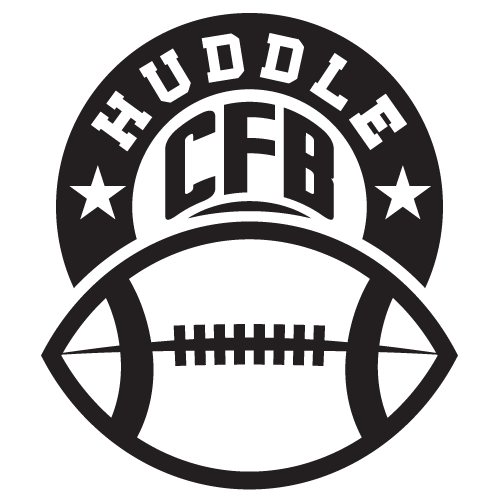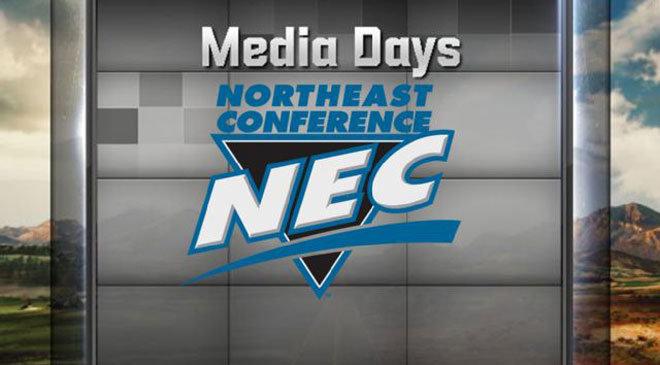Northeast Conference director of communications and social media, Ralph Ventre, refers to the burgeoning frontier of online platforms as “the great equalizer.”
“It allows a league like the Northeast Conference to get its message out just as effectively as the SEC would,” Ventre said.
Thursday’s NEC Social Media Day — which begins at 11 a.m. on NEC Front Row — will not have Paul Finebaum broadcasting on site, like last week’s SEC event in Hoover. But the conference has, nonetheless, built a unique approach that could be the wave of the future.
In its second year emanating from MetLife Stadium, the NEC brings the traditional media day into the 21st century by adding a social element. In addition to media on hand, NEC Front Row viewers from around the nation have the ability to interact in realtime with players and coaches.
It’s an idea the NEC first debuted for basketball in 2012, coinciding with the opening of the Barclays Center in Brooklyn.
By holding its social media days at two of the most prominent venues in the New York area, the NEC maintains a physical presence within the league’s geographic footprint, while at the same time catering to any audience anywhere in the world with internet access.
Social media’s growing popularity continues to change how we consume events, sports included. Twitter’s instant connectivity transforms each session on a college football Saturday into a veritable barstool, from which fans interact with a few thousand of their closest, digital friends.
At the same time, it’s also allowed content providers direct lines of communication to patrons — spreading “its message,” as Ventre described — to help build up an audience.
Ventre detailed one such instance last year, when NEC football alum — former Wagner Seahawks and Tampa Bay Buccaneers defensive end Quintin Anderson — discovered and followed Social Media Day through Twitter.
“It is great for a small league like us, because it allows us to reach so many people and get our message out. That’s not an ability we had 10, even five or six years ago,” Ventre said.
That massive transformation of the media landscape in the last decade isn’t about to subside in the next decade, either. The NEC’s efforts through both its social channels and NEC Front Row put it out in the forefront of the shift.
At tumultuous time for the television industry, live events offer advertising revenue salvation. Barring rare exceptions, the majority of viewers will tune in to a football or basketball game as it happens rather than via DVR, which allows the user to skip commercials.
But even as TV networks invest record-setting dollar amounts into live sports, the growing importance of digital is plainly evident.
The Pac-12 announced last week at its media days in Hollywood that 150 Pac-12 Network events will stream via Twitter, similar to a partnership formed between the social media platform and the NFL.
For the Pac-12, the collaboration with Twitter alleviates some of the issues the conference has faced gaining widespread distribution for its linear network.
Social media platforms continue to evolve, the full potential of their reach still to be seen. Facebook Live and Periscope are potential game-changers for digital distribution.
I have championed a model akin to WWE Network in this space previously. The ACC, in association with ESPN, announced this week it will dip its toe in digital — though I suspect the 2019 linear channel launch date never comes to fruition, given the direction of the market.
Even as more of the heavyweights in the sports landscape move in that direction, digital distribution is another great equalizer for smaller leagues and conferences in its own right.
“Let’s face it: TV space is limited, TV time is limited. But we want all of our fans and the parents of our students to see games,” Ventre said. “Internet and our digital network has allowed us to do that.”
“We have had television packages, regional and national, in the past,” he added. “But you have to go in their time slots when they have availability, and the production costs are high. The production costs for a web production transmitted via IP rather than satellite, they’re reasonable.”
Without the hindrance of conventional TV time slots or channels, a conference like the NEC can schedule games in the windows that fit its members without input from TV networks, and still reach an audience.
The same principles apply to other original content. Whereas the linear TV model required a timeslot and distributor, digital allows for a library as vast as however the creators can make it. This is one other one in which NEC Social Media Day is capitalizing.
“We had to show it had some kind of more value [to university presidents], and that it wasn’t just going to serve the newspaper writers who cover our league,” Ventre said. “It was going to be content for our digital network, and something that our fans can enjoy, as well.
“The whole idea of building this into essentially a live preview show built around the media day is how we were able to convince them that this was worthwhile.”
Social Media Day might be more than worthwhile; the NEC’s model may well be the future for college sports distribution and interaction.


